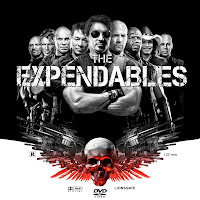Camera Shots And Angles
Eye Level - A fairly neutral shot; the camera is positioned as though it is a human actually observing a scene, so that actors' heads are on a level with the focus. The camera will be placed approximately five to six feet from the ground.
High Angle - Not so extreme as a bird's eye view. The camera is elevated above the action using a crane to give a general overview. High angles make the object photographed seem smaller, and less significant (or scary). The object or character often gets swallowed up by their setting - they become part of a wider picture. Used in horror films to make the characters feel inferior.
Low Level - These increase height (useful for short actors like Tom Cruise or James McAvoy) and give a sense of sped up motion. Low angles help give a sense of confusion to a viewer, of powerlessness within the action of a scene. The background of a low angle shot will tend to be just sky or ceiling. The added height of the object makes you feel fear and insecurity as a viewer, making YOU - THE VIEWER feel inferior to the object/objects in the viewer.
Birds Eye - This shows a scene from directly overhead, a very unnatural and strange angle. Familiar objects viewed from this angle might seem totally unrecognizable at first (umbrellas in a crowd etc). This shot does, however, put the audience in a godlike position, looking down on the action. People can be made to look insignificant, ant-like. Hitchcock was particularly fond of this type of shot.

Oblique - Sometimes the camera is tilted (i.e. is not placed horizontal to floor level), to suggest imbalance, it is very popular in horror movies. This technique is used to suggest point-of-view shots i.e. when the camera becomes the 'eyes' of one particular character, seeing what they see - a hand held camera is often used for this.
Extreme Close Up - As its name suggests, an extreme version of the close up, generally magnifying beyond what the human eye would experience in reality. An extreme close-up of a face, for instance, would show only the mouth or eyes, with no background detail whatsoever. This is a very artificial shot, and can be used for dramatic effect. The tight focus required means that extra care must be taken when setting up and lighting the shot - the slightest camera shake or error in focal length is very noticeable.
Over The Shoulder Shot - is a shot of someone or something taken from the perspective or camera angle from the shoulder of another person. The back of the shoulder and head of this person is used to frame the image of whatever (or whomever) the cameras pointing toward. This type of shot is very common when two characters are having a discussion and will usually follow an establishing shot which helps the audience place the characters in their setting.
Establishing Shot - In motion pictures and television production, opening shot that establishes the environment of a show or scene. The establishing shot usually has a wide field of view and serves to orient the audience to the surroundings of the situation they are about to see.
Worms Eye - This camera angle is the opposite of birds eye view shot. it is a angle where you are looking up from beneath the object of interest. Looking right up from the floor/ground. Makes the audience feel inferior and very small, used for intimidating characters in fight scenes if one gets knocked down.
Extreme Wide Shot - Shows an incredibly wide shot, showing a large picture in the viewer. Often the end result of a shot that is like a 'rectangle shape' wider than it is higher.
180 Degree Rule - The 180 degree angle shot is a guideline for on screen shooting. This makes sure that the camera is always shooting on one side of the scene and not the other. These shots are usually used to show the relationship between two characters and is used frequently when filming conversations between characters.
















